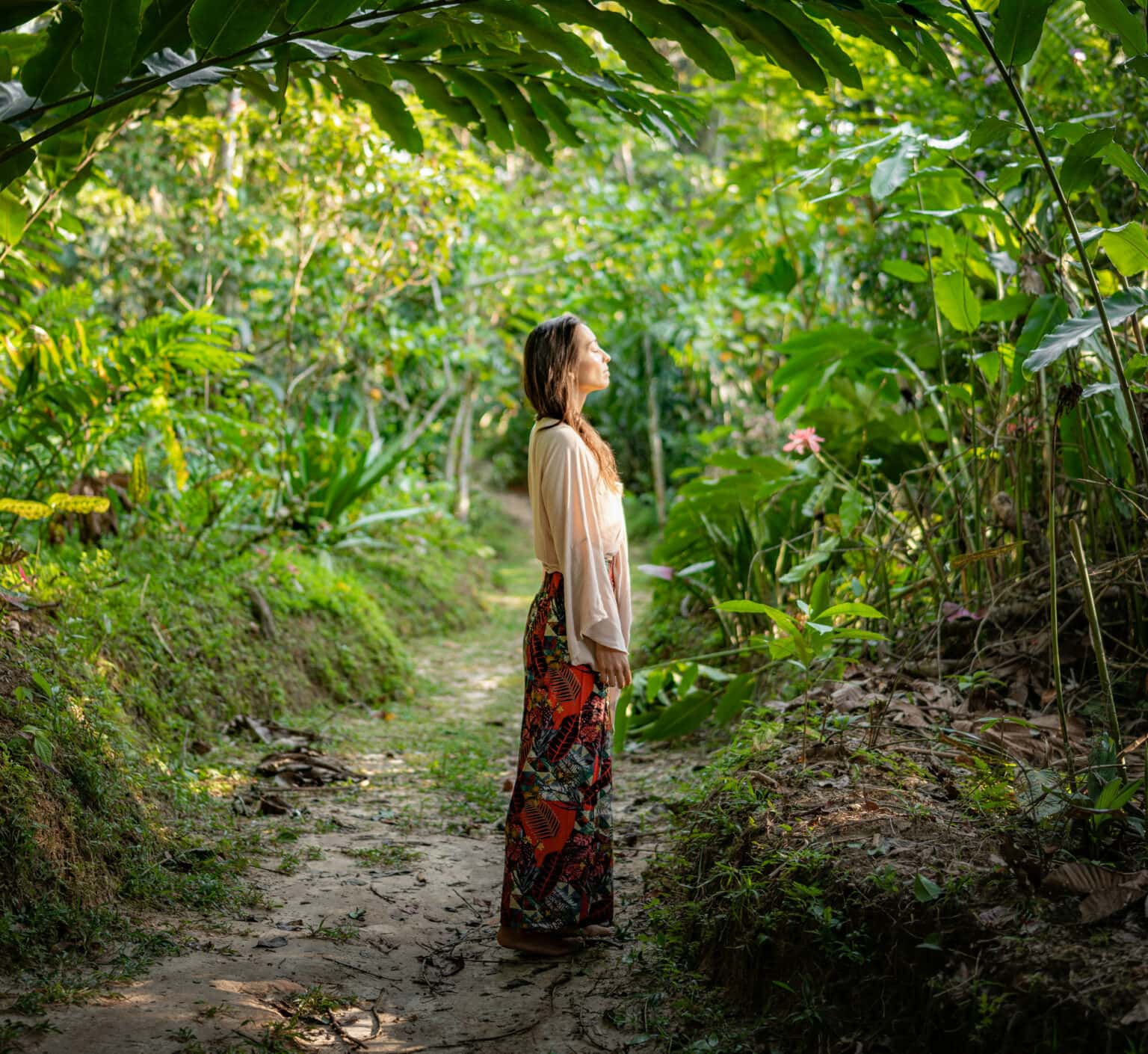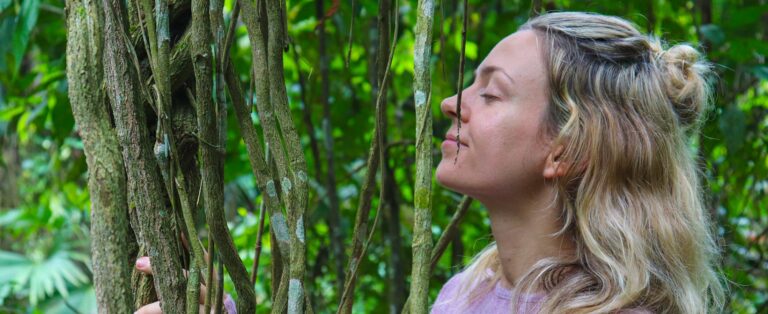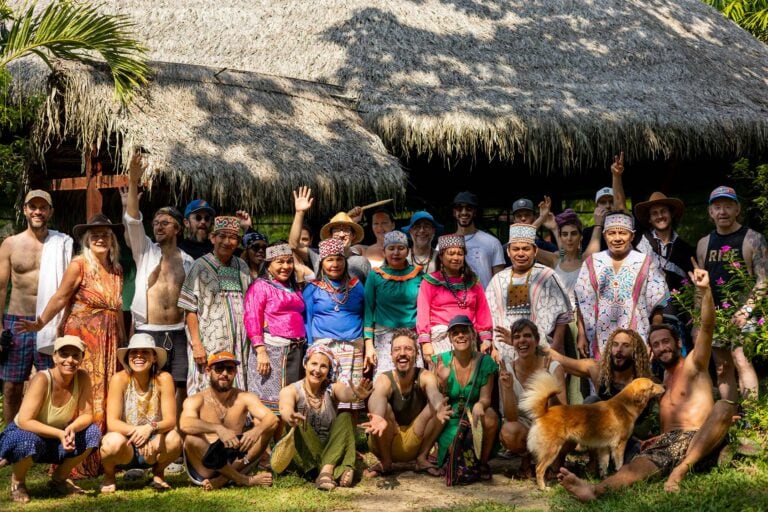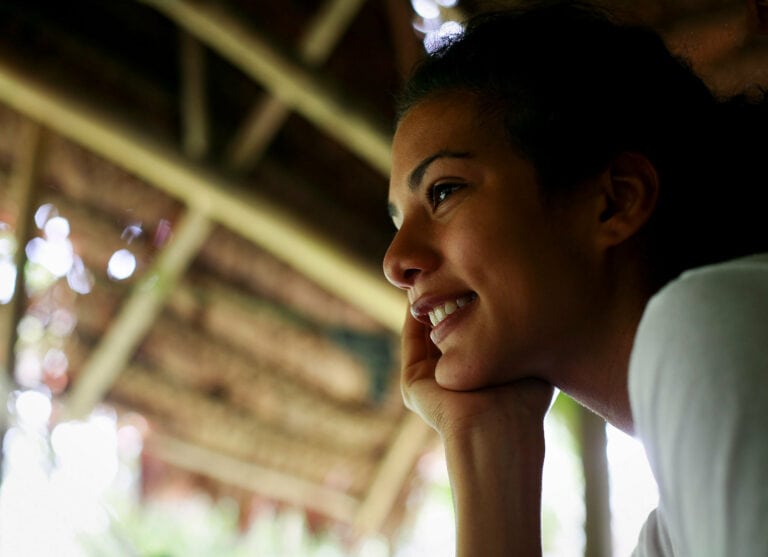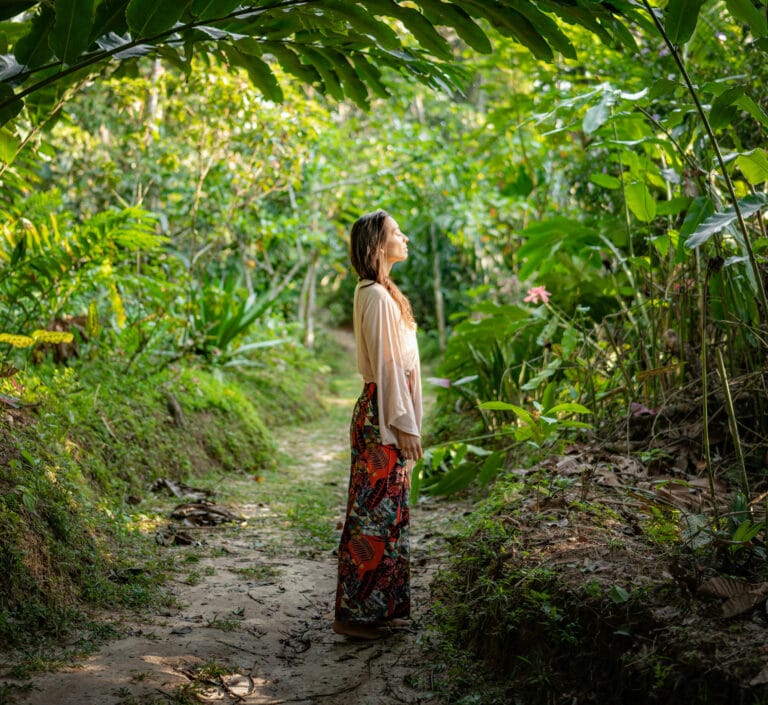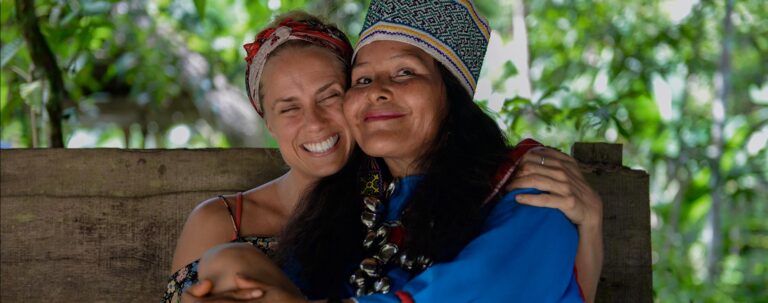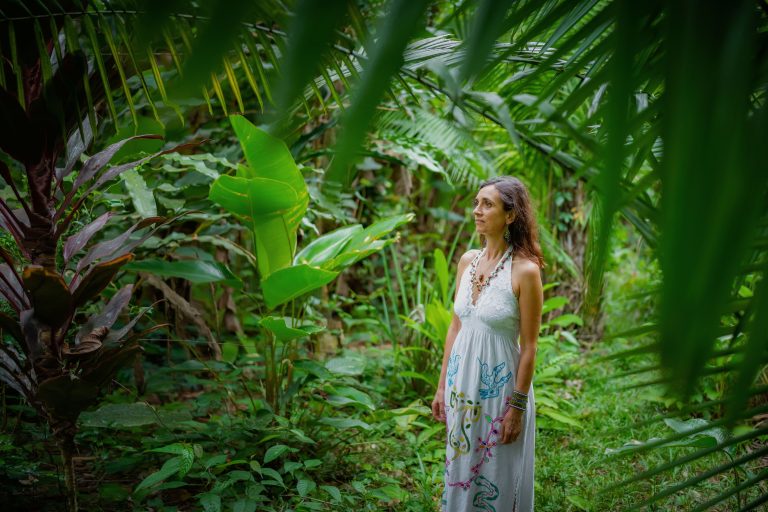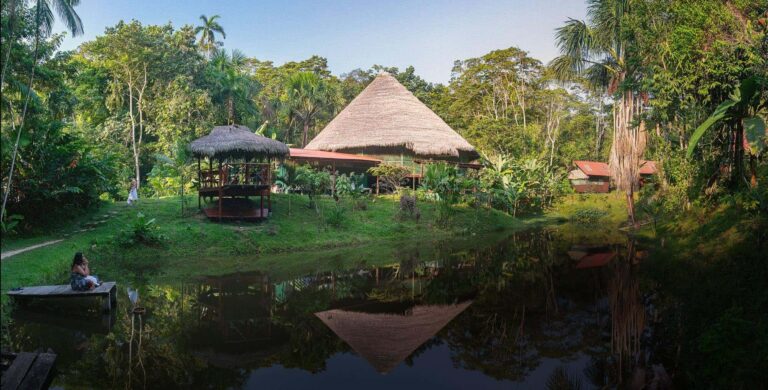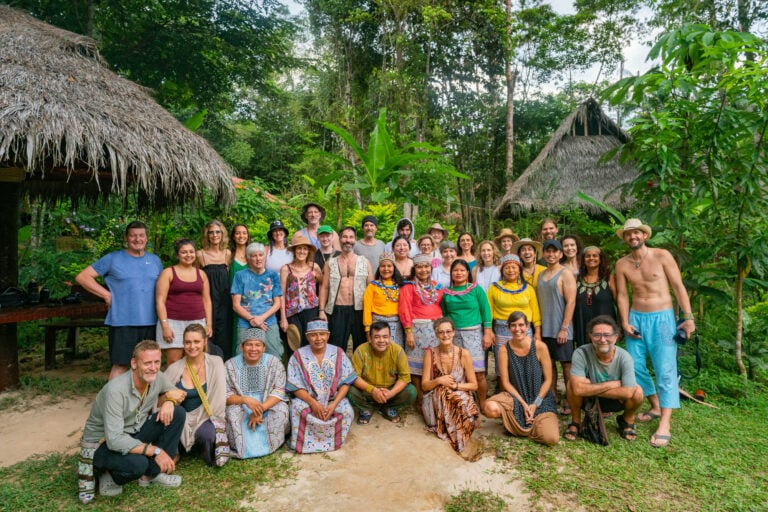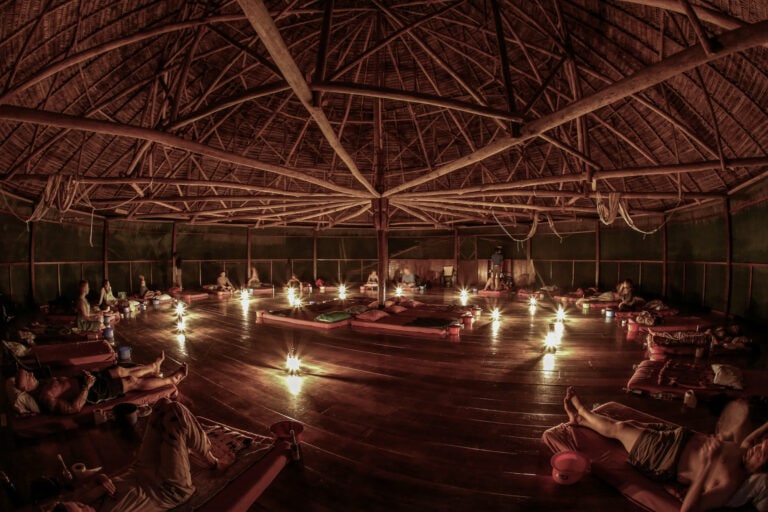By Públio Valle, Senior Retreat and Integration Facilitator
A Sacred Journey of Surrender and Deep Listening
It is often said that the connection with ayahuasca starts in the moment we say yes to a retreat. It can be subtle, but noticeable, that something starts to happen as our gaze turns towards the jungle.
To participate in an ayahuasca ceremony in the Amazon is not merely to participate in a plant medicine retreat — it is to step into a living tradition of healing, held by an ancient lineage, the wisdom of the forest, and the intelligence of Spirit. At the Temple of the Way of Light, we have witnessed how true transformation is seeded not only in the ceremonies themselves but in the depth of ayahuasca preparation that precedes them.
Ayahuasca preparation is not a checklist. It is a devotional act — a quiet, ongoing prayer that aligns your body, mind, and soul with the sacred work to come. It is the moment before the doorway opens — the breath before the song — and it matters deeply.
1. Cultivating a Living Intention
Ayahuasca preparation begins with intention. Intention is often misunderstood. It’s not about setting an expectation, asking for a particular kind of journey, or dictating a specific outcome. Instead, it is a way of orienting your inner compass — like lighting a candle in the dark and saying, “I am ready to see.”
To support this:
- Ask: What in me is longing to be seen? What patterns am I ready to release?
- Reflect gently, without urgency. Let your heart, not just your mind, speak.
- Be willing to let your intention evolve as you approach the retreat.
We prepare ourselves so we can listen to what the medicine wants to reveal to us. In this sense, it is important to make a clear distinction between expectation and intention.
Expectation often stems from the mind’s desire for control; intention arises from the heart’s willingness to be transformed.
Expectation carries a certain tightness, as if, consciously or unconsciously, we already know what our process will look like. This leaves little room for the infinite ways in which the plant spirits can teach us. When we hold expectations, it’s easy to think something is wrong — that the medicine isn’t working, that we didn’t prepare well, and so on.
The more sincere your intention, the more the medicine can meet you—sometimes through discomfort, through difficult emotions, or through the very parts of yourself you’ve struggled to face.
A firm, heart-centered intention connects your journey to something greater than yourself—something that touches the roots of shared human suffering. While it’s natural for expectations to arise, the more aware we are of them, the easier it becomes to let go.
When we are truly connected to intention, we are open, flexible, and curious. If your intention is sincere, you can find answers and insights at any moment of the ceremony, in anything that unfolds. In the space of clear intention, the teacher might take many forms — the pain in your stomach, a noisy neighbour, difficult emotions, or even dissatisfaction with what’s happening.
At the beginning of this work, it might not be clear to us that this is not something that we are doing only for ourselves. With time, it becomes evident that you are not the only one suffering in the way you do; humanity as a whole is struggling to find peace, safety, contentment, joy, and love.
There’s something very liberating in realizing that your challenges are not as unique as you thought they were. In this way, you perceive that the quality of an intention can be measured by how universal it feels, in the sense that it can touch the roots of human suffering, beyond personal stories and judgments, words that can touch what people have been describing as “common humanity.”
Although this is not a limiting formula, we usually encourage participants to formulate their intentions using one of the following structures:
- Show me…
- Teach me…
- Help me…
Followed by something very simple, easy to access, and as said before, something that feels universal. Some examples:
- Show me love
- Teach me compassion
- Help me to forgive
- Show me my pain
- Show me my fear
If you are at the beginning of this path, it’s usually not recommended to start with intentions that might be overwhelming for you. Intentions may evolve from one ceremony to the next, and they may change as the retreat unfolds; maintain an open attitude towards them. Surrender and receptivity are the main keys.
Also, please remember that an intention is not a mantra, something that you need to keep repeating to yourself throughout the ceremony, but rather an anchor that you can revisit from time to time, and also during your integration process.
Offering
It is natural to approach the medicine with an intention — something we are seeking, asking, or hoping to receive. And this is important. But as a facilitator, I also encourage participants to ask a deeper question:
“What am I offering to the medicine / to the spirits? What qualities am I bringing that will support the process?”
It could be something simple, yet powerful — like trust, patience, presence, or a willingness to feel. These offerings create a foundation for the journey. They are like inner tools you carry with you into the ayahuasca ceremony — quiet allies that allow the work to unfold more deeply.
Approaching the medicine not only with a request, but with an offering, brings you into right relationship — a partnership, rather than a transaction. This subtle shift can open the field for a more grounded, humble, and reciprocal experience.
Practice: Sitting With Intention and Offering
Find a quiet place where you won’t be disturbed. Light a candle if you wish. Sit comfortably, close your eyes, and bring awareness to your breath. After a few minutes of softening into presence, ask yourself two questions — gently, without needing immediate answers:
- What is my heart asking for in this journey? (Intention)
- What am I offering to the medicine (or even better, the plant spirits) in return? What quality or way of being am I willing to bring forth? (Offering)
Let these questions resonate in your body, not just your mind. You may feel sensations, emotions, or images arise. Stay with it for 10–15 minutes. Afterward, you may wish to journal what emerged.
Journaling Prompts:
- What is the deeper truth behind my intention?
- If I had to offer one quality to the medicine to support the unfolding of this process, what would it be? Why?
- How does it feel in my body to imagine this offering being received?
Let this practice be something you return to in the days leading up to your ayahuasca retreat. Each time you sit with it, you are weaving a thread of trust and presence that will serve you when the ceremony begins.
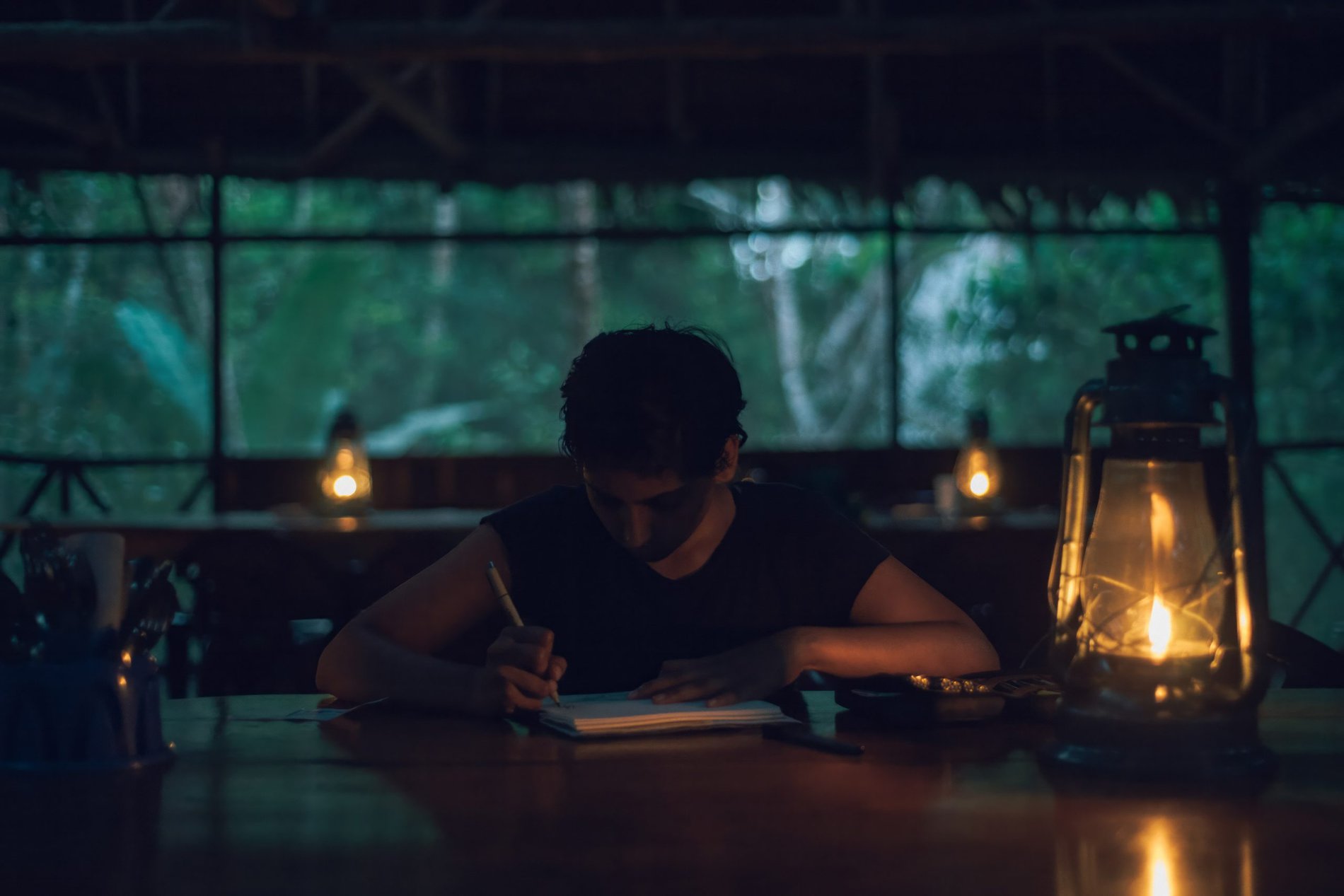
2. Navigating Emotions During Ayahuasca Preparation
In the weeks or even months leading up to the ayahuasca retreat, it is not uncommon for the medicine to begin working, stirring up what has been hidden, shaking loose what is ready to be seen.
You may experience:
- Emotional waves of grief, anger, or anxiety
- Sudden clarity around relationships or life choices
- Resistance or fear — even the urge to back out
These are not signs that something is wrong. In fact, they are signs that something is moving.
Among the most common emotions that arise during this time are fear and anxiety. As a facilitator, I often remind participants:
These feelings are not problems to fix — they are signs of reverence.
Fear, in this context, is a natural response to entering the unknown. It shows that you are approaching the work with sincerity, humility, and respect. You are stepping toward the sacred — toward something vast and mysterious. Of course, the ego will tremble a little.
When we feel fear before the retreat, it is often because some deeper part of us knows this work will touch what is real.
Rather than trying to overcome these feelings, we invite you to sit with them and acknowledge them. Talk to them.
Ask:
- What are you protecting?
- What do you need from me?
Fear can be a wise gatekeeper, asking us to slow down and listen, not so we avoid the journey, but so we enter it with presence.
Approach these moments not with control, but curiosity. Let your inner world begin to unfold. Breathe. Journal. Talk with trusted friends or a preparation/integration therapist. The healing process has already started. In essence, it is a process of welcoming whatever is coming up, not seeing the challenges that might emerge in your ayahuasca preparation as problems, but rather as precious material that needs attention.
3. Spiritual Preparation for Ayahuasca
To truly prepare for ayahuasca is to recognize that this is sacred work. The medicine is a teacher, not a substance — a consciousness that works in partnership with a multitude of plant spirits, the land, and your own soul.
It’s always good to remember that ayahuasca is not something we take. It is something we enter into a relationship with.
Ways to prepare spiritually:
- Spend quiet time in nature, listening rather than thinking, and seeking
- Offer simple prayers — in your own words, in your own way
- Sit in silence or meditation daily, even for just 10 minutes
- Speak to your ancestors or guides, asking for support and clarity
This inner orientation creates a foundation of trust. It helps you arrive not as a seeker of experiences, but as a humble participant in a much larger field of healing.
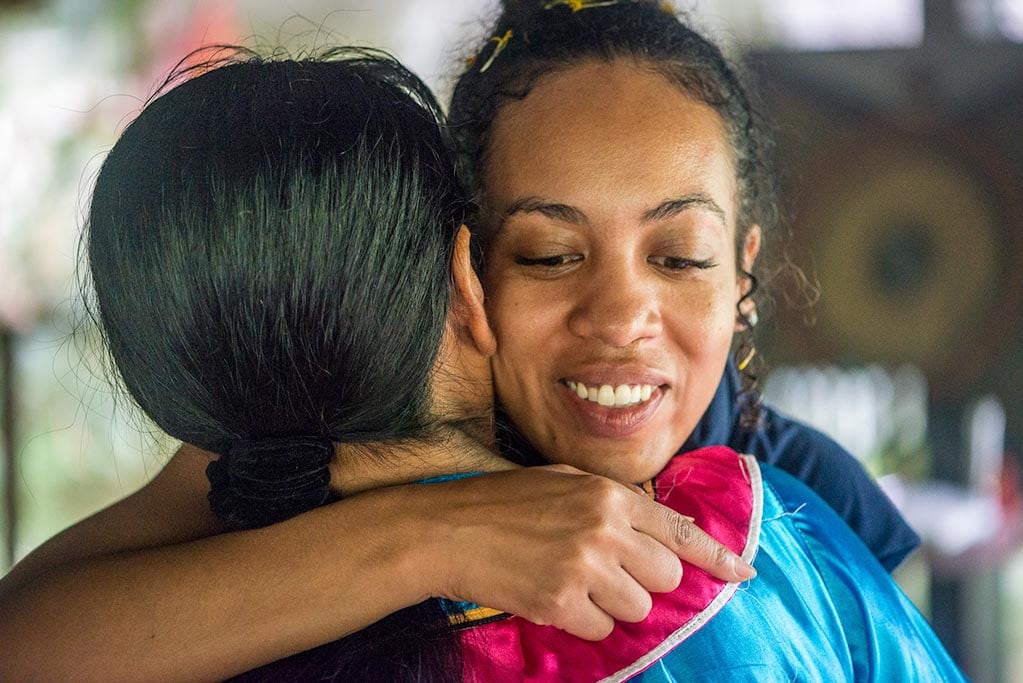
4. Dieta and Physical Ayahuasca Preparation
While the dieta and abstinence protocols may appear physical or restrictive, they are also deeply energetic. To follow them with reverence is to signal: I am stepping into sacred space.
The diet is not just about food. It is about softening the noise of the world, so you can hear the plants when they speak.
By abstaining from meat, alcohol, stimulants, sexual activity, and processed foods, you begin to clear physical and energetic density. You become more sensitive to dreams, to intuition, to your emotional body. You prepare the vessel.
Rather than approaching these guidelines as limitations, consider them devotional. Each choice becomes a way of saying yes to healing, presence, and transformation.
While letting go of some of these habits, you may start to perceive some hidden discomfort, something that has been with you all along, but that you were masking with these acts. The emergence of these discomforts is precious; from my perspective, it is as if you are already helping the medicine to access this material that was being avoided. Please welcome it.
5. The Art of Surrender
Surrender is not something that happens only during a ceremony. It begins in ayahuasca preparation — in the daily practice of letting go of control, releasing expectations, and trusting the process.
This can look like:
- Letting go of the need to have a “powerful” experience
- Trusting that discomfort is part of the path
- Welcoming not-knowing as a kind of wisdom
From my experience, the more tightly you hold on to what you think is true, the more gently – or sometimes not so gently – the medicine will loosen your grip.
Surrender doesn’t mean being passive. It means being receptive. It means meeting what arises with courage and openness, knowing that even the most difficult moment may carry the seed of your deepest healing.
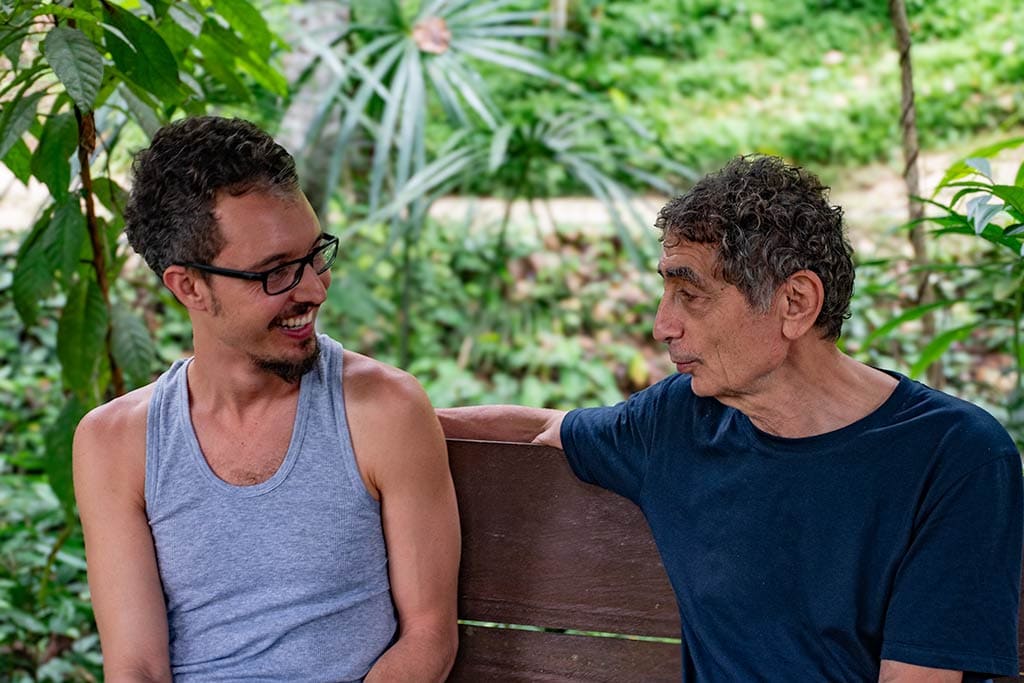
Final Thoughts on Ayahuasca Preparation: The Ceremony Begins Before You Arrive
The journey begins long before you step into the maloca. It begins with each conscious breath, each honest reflection, each act of reverence for the mystery you are about to enter.
You are not preparing for a single night or a single ayahuasca ceremony. You are preparing for a return to the truth of who you are, to the wisdom of nature, and to the path your soul came here to walk.
As you prepare, remember:
This work is not just about you. Your healing ripples outward — into your family, your lineage, and the collective field. You are being called not only for yourself, but for all those you are connected to.
When we approach this work with reverence and a sincere commitment to ayahuasca preparation, we open the door to healing that is not just personal but also collective and ancestral.
